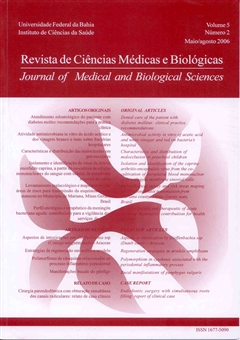Aspects of intoxication by Dieffenbachia ssp (Dumb cane) – Araceae Abstract
DOI:
https://doi.org/10.9771/cmbio.v5i2.4123Keywords:
Poisonous plants, Dieffenbachia ssp, dumb cane, epidemic data, and intoxications.Abstract
Dieffenbachia ssp, popularly known as “comigo-ninguém-pode” (dumb cane) is one of the most common plants involved in poisonous accidents around the world. It belongs to the family Araceae, it is a poisonous plant, cultivated in flower pots as ornament, commonly found in residences. The aim of the present work is to accomplish a review of the intoxications aspects produced by the Dieffenbachia ssp. The mechanisms of toxicity of the Dieffenbachia ssp are multiple and they include the calcium oxalate raphides and other protein or non-protein similar substances. The exposition to the toxicity can happen through oral, ocular and dermal contact, with symptoms varying from edema, irritation of the mucous membrane and even asphyxia and death. The accidental exposition is the largest cause of intoxications by Dieffenbachia ssp, showing lack of knowledge of the population regarding its toxicity. Poisonous plants are not the main causes of human intoxications, but when analyzed the frequency in children, especially in the age group from 0 to 4 years of age, the number of intoxications becomes significant. Dieffenbachia ssp has been mentioned as one of the main poisonous plants causing accidents, included in the State of Paraná, where they are the most cited plant in the registration of cases of intoxications. Preventive care is suggested for decrease of the accidents involving plants and the spread of information about poisonous species found in each area could also reduce the number of accidents.Downloads
Download data is not yet available.
Downloads
Published
2006-02-04
How to Cite
Silva, I. G. da R., & Takemura, O. S. (2006). Aspects of intoxication by Dieffenbachia ssp (Dumb cane) – Araceae Abstract. Journal of Medical and Biological Sciences, 5(2), 151–159. https://doi.org/10.9771/cmbio.v5i2.4123
Issue
Section
Review Articles
License
The Journal of Medical and Biological Sciences reserves all copyrights of published works, including translations, allowing, however, their subsequent reproduction as transcription, with proper citation of source, through the Creative Commons license. The periodical has free and free access.


